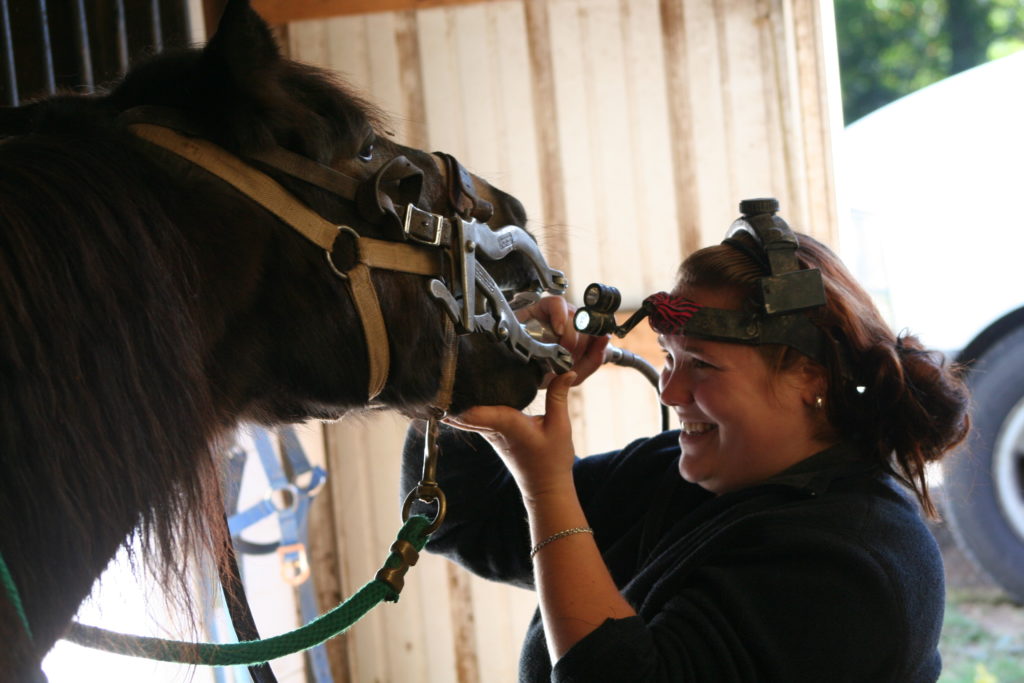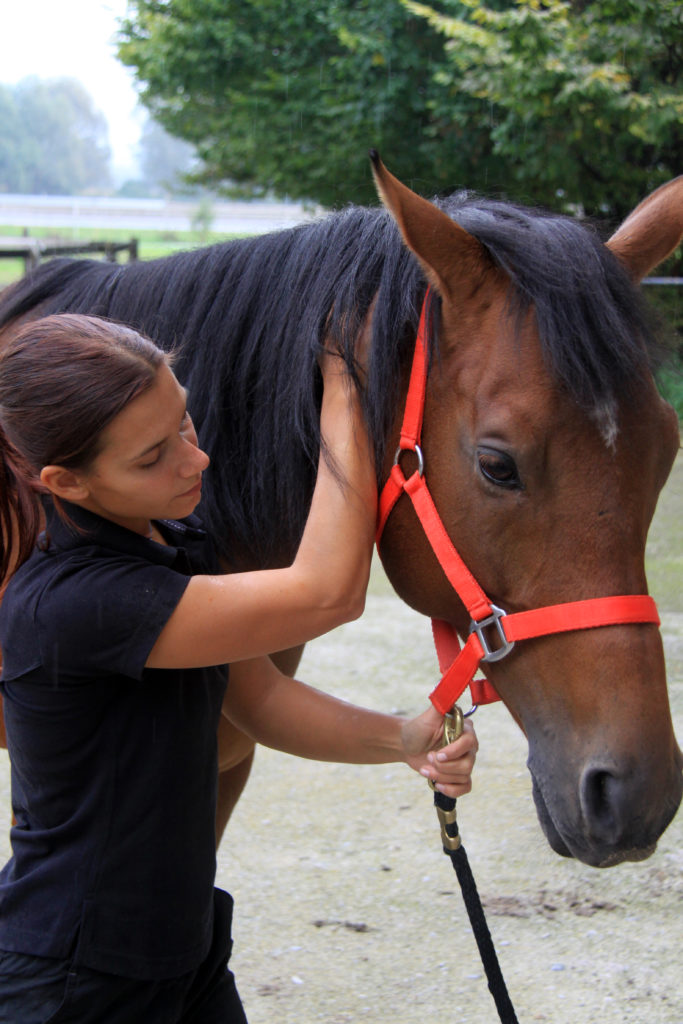CARING FOR HORSES AFTER A VISIT FROM THE DENTIST – PART 1 BY KATJA PORENTA EEBW
Regular dental check-ups are a must for horses of all ages, breeds and occupations. Small irregularities in the teeth can be rectified more easily and cause less trouble if spotted sooner, so having a good dentist out at least once a year is a must. Let’s face it, no one likes going to the dentist, and horses are no exception. The dental check up and dental work is not a particularly pleasant experience for the horse (although a competent dentist will make it as least unpleasant as possible) and horses can experience discomfort in the muscles even after the visit is over and done with. A dental check-up usually includes the horse being sedated and holding his mouth open for relatively long periods of time, which can leave the muscles feeling a bit sore afterwards. Using some simple techniques, we can ease the soft tissue discomfort after the dental work.
THE CONNECTION BETWEEN TEETH AND MUSCLES
No part of the horse’s body is an island, functioning by itself. It is all connected and what is going on in one part will invariably influence the rest. This is why it is vital to have a holistic approach to every health issue, from injured tendons, to rain rot to sharp teeth edges. Addressing the symptom usually doesn’t cut it in the long run, so we need to look at the body as a whole. The teeth are directly and indirectly connected to the TMJ (temporomandibular joint) and the muscles surrounding it. Through soft tissue they are also connected to the poll muscles and the atlanto-occipital joint. And the poll is connected to the neck, which is connected to the back… You can see where this is going. Fascia is everywhere and it connects everything! But let’s stay on track here and focus on the more immediate surroundings of the teeth. The TMJ and the poll are very closely related to what is going on in the horse’s mouth. This is why it is very common that teeth issues that go on for a longer time have a negative impact on those two areas. When a horse has pain in his mouth, stemming from sharp edges or any other dental issue, he will try to protect himself from it by tensing his chewing muscles, his poll muscles and clamping his jaw. This way he prevents the TMJ from moving and causing pain. The rider often feels this as the horse not taking up contact or resisting the rider’s rein aids. The horse will often carry his head in an asymmetric manner, tilted to one side and bending will often be worse on one side too. The longer this situation persists, the more the muscles will show signs of tension, pain and restrictions.

Horses with long lasting dental issues often become head shy and can be very sensitive in the poll area. Because a simple dental issue can have an impact on the horse’s entire body, it is essential not only to have his teeth done regularly, but to tackle any residual muscle tension after the dental work as well. If we suspect that poll issues (which are very common, by the way) are caused by dental issues, the cause needs to be addressed first before we can make the horse’s poll comfortable again. Only when we take away the pain in the mouth, we can successfully tackle the stiffness in the poll. Of course, poll stiffness can be caused by a myriad of different causes, so maybe your detective quest won’t stop with fixing the teeth. However, it is a good place to start. So, the teeth issues can cause muscle pain, which is why it is good to spend some time relaxing the muscles after the dental. So if the dentist doesn’t find anything wrong with the teeth, then we can skip the massage, right? Wrong. The actual dental exam itself can cause some mild muscle discomfort (or very severe muscle discomfort if the dentist isn’t a good one), as it involves a relatively unnatural position of the jaw and keeping the mouth open for a longer time. In any case it is a good idea to take a few minutes after the exam to give some love and attention to your horse’s musculature.
Anyone signed up to the Equitopia membership program may access parts 2 and 3 of this post.



